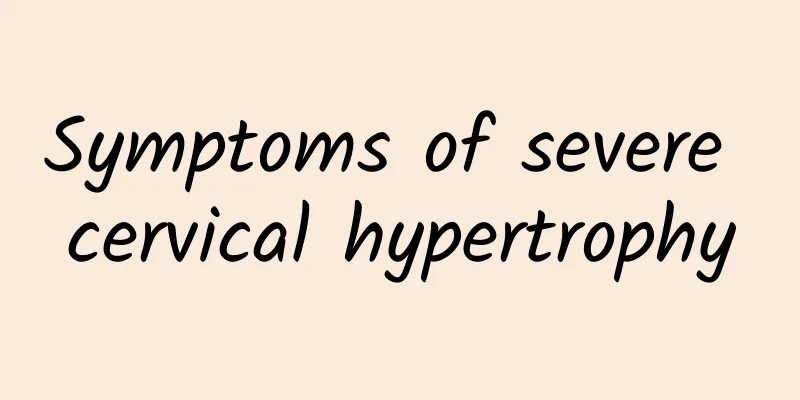Symptoms of severe cervical hypertrophy

|
Symptoms of severe cervical hypertrophy include abnormal vaginal bleeding, increased leucorrhea, and lower abdominal pain, which may affect women's quality of life. Cervical hypertrophy is usually caused by chronic cervicitis, cervical gland cysts, or cervical fibroids. Treatments include medication, surgery, and lifestyle adjustments. 1. Abnormal vaginal bleeding: Cervical hypertrophy may cause irregular menstrual cycles or increased menstrual flow. Non-menstrual bleeding is also a common symptom. If bleeding persists or worsens, you should seek medical attention for a cervical smear test and ultrasound examination to rule out serious diseases such as cervical cancer. Treatments include antibiotics to control infection, cervical transurethral resection, or cervical conization. 2. Increased vaginal discharge: Cervical hypertrophy is often accompanied by cervical inflammation, which leads to increased vaginal discharge, which may be yellow or have a strange smell. Keeping the vagina clean and dry and avoiding the use of irritating washes can alleviate the symptoms. In terms of drug treatment, antibacterial drugs such as metronidazole suppositories or clindamycin ointment can be used. In severe cases, surgical treatment should be considered. 3. Lower abdominal pain: Cervical hypertrophy may cause lower abdominal pain or lumbosacral pain, especially during sexual intercourse or defecation. The pain may be related to compression of tissues around the cervix or spread of inflammation. Physical therapy such as hot compresses and massage can relieve pain, and drug therapy includes nonsteroidal anti-inflammatory drugs such as ibuprofen. If necessary, cervical surgery is required to relieve compression. Severe cervical hypertrophy not only affects women's physical health, but may also cause psychological stress. Regular gynecological examinations and timely detection and treatment of cervical lesions are the key to preventing and controlling cervical hypertrophy. Combining drug treatment, surgical treatment and lifestyle adjustments can effectively relieve symptoms and improve quality of life. If symptoms persist or worsen, seek medical attention in a timely manner to avoid delaying treatment. |
<<: How to treat cervicitis cells
Recommend
Will threatened miscarriage affect life expectancy?
Pregnancy is a happy thing, but many pregnant wom...
Is ectopic pregnancy the reason for poor fallopian tube obstruction surgery?
Is ectopic pregnancy the reason for poor fallopia...
Common symptoms of pelvic inflammatory disease in women
Pelvic inflammatory disease is a disease with a h...
Daily care for female adnexitis
How to prevent adnexitis? In the early stage of a...
Red marks on health checkup but no attention paid to abnormalities of three highs may indicate hidden dangers
Chronic diseases are also called "lifestyle ...
How to deal with irregular menstruation at 17 years old What examinations should girls do for irregular menstruation
What should I do if I have irregular menstruation...
How to treat endometrial tuberculosis most thoroughly
Modern women are under great pressure in life, so...
Obesity is closely related to uterine fibroids. A reasonable diet can treat uterine fibroids.
Is obesity related to uterine fibroids? Can a pro...
What to eat to relieve pain
Menstrual cramps can be relieved through dietary ...
What is the best way to treat pelvic effusion?
Pelvic effusion usually occurs in the lower part ...
What should you pay attention to after abortion? Do these 4 things
After an abortion, women must pay attention to re...
The main causes of cervical hypertrophy
Cervical hypertrophy http://www..com.cn/fuke/gjjb...
How many days does it take for abdominal pain to start after an ectopic pregnancy?
Ectopic pregnancy usually starts with abdominal p...
What does pelvic inflammatory disease sequelae mean? What are the causes of pelvic inflammatory disease?
Pelvic inflammatory disease is a general term for...
Will irregular menstruation affect fertility?
Will irregular menstruation affect fertility? 1. ...









